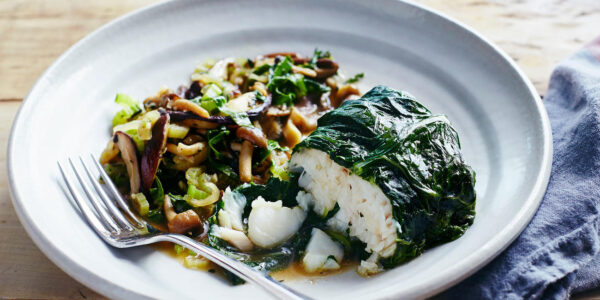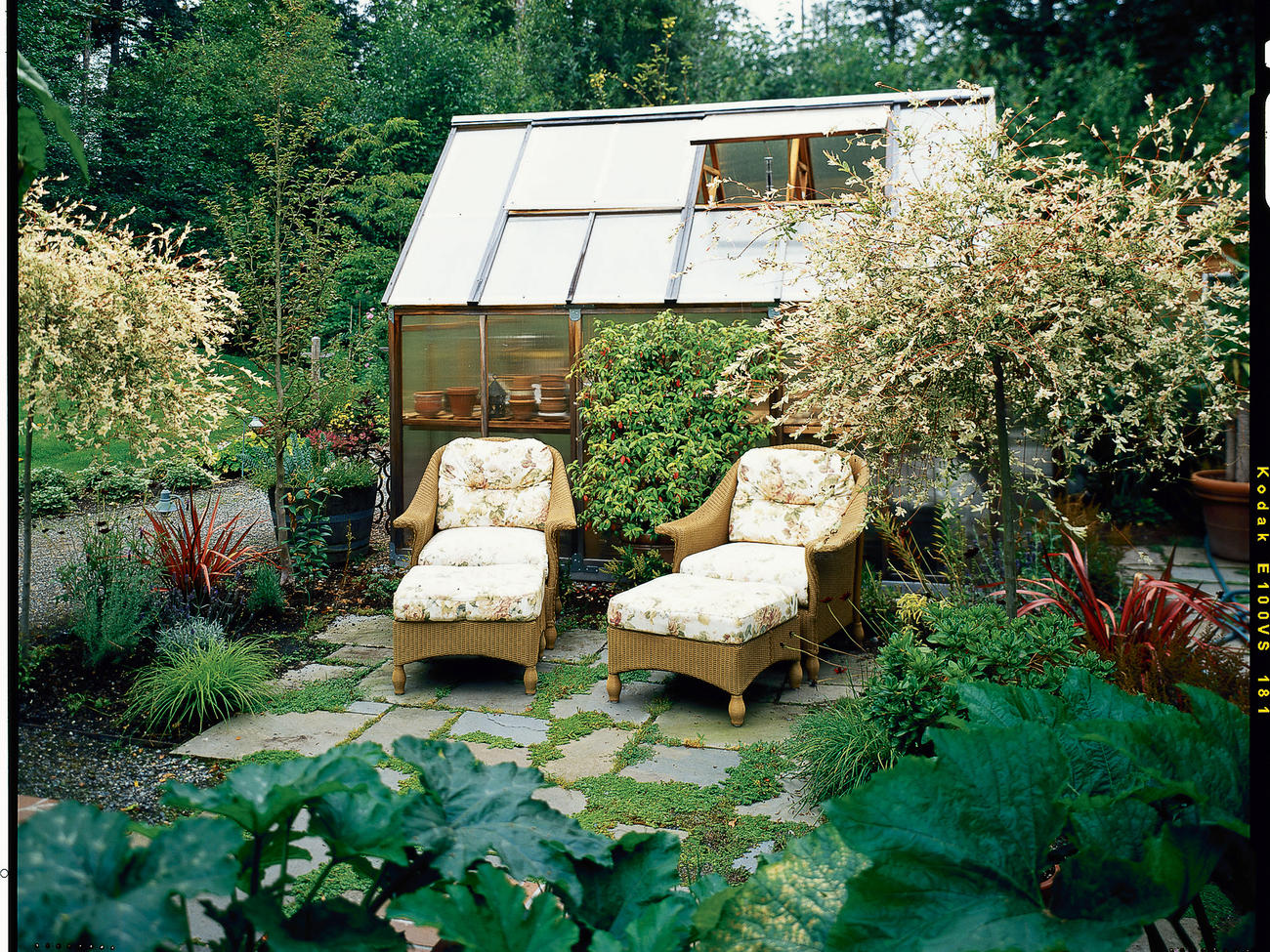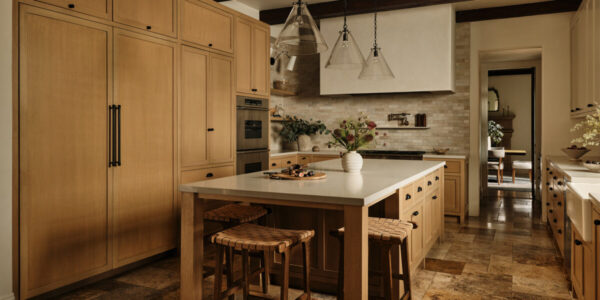
Plan a patio: Watching the garden grow

“Decks are architectural integrators; patios are landscape integrators,” says landscape architect John Kenyon. “With a deck you have a rail and height separating you from the landscape. On the patio there’s nothing between you and nature.”
A patio can go anywhere on the lot – even off a small greenhouse facing the vegetable garden. Kenyon says watching vegetables grow is like watching television for gardeners. “A vegetable garden grows and changes daily – it almost makes other plantings seem static. It’s fun to sit back, watch it happen, and appreciate your hard work,” he says.
To soften the pavers and add interest to the space, Kenyon placed perennials around the irregular 8- by 8-foot stone shape. Willow trees (Salix integra ‘Hakuro Nishiki’) and fuchsia (F. x hybrida) add height and screen the greenhouse. Bronze New Zealand flax (Phormium tenax) adds a splash of color, and large squash leaves make the transition between patio and vegetable garden.
